No products in the cart.
NEWS
Grow Your Own Perennial Vegetables in Containers for a Continuous Harvest
Growing your own food is a rewarding experience, and it becomes even more sustainable when you focus on perennial vegetables. Unlike annual crops that require replanting each year, perennial vegetables return season after season, offering a consistent source of fresh produce with less effort over time. For many gardeners, especially those with limited ground space, cultivating these enduring plants might seem challenging. However, the solution is surprisingly simple and effective: growing perennial vegetables in containers.
Container gardening provides incredible flexibility, allowing you to create a thriving edible garden just about anywhere – from a sunny patio or a compact balcony to even a simple window box setup. This method means you don’t need a traditional garden plot to enjoy homegrown goodness. In fact, for some perennial vegetables, container cultivation can actually lead to better results. Pots give you superior control over crucial growing factors like soil quality, moisture levels, and even easier management of pests and diseases. While it’s true that plants in containers might need more frequent watering and feeding compared to those in the ground, the benefits often outweigh this extra bit of care.
A significant advantage of using containers for perennial vegetables is the ability to easily move your plants. This mobility allows you to optimize growing conditions throughout the year. Need more sun in the winter? Move the pot. Want to protect a plant from intense summer heat? Shift it to a shadier spot. This simple control over environment can significantly boost plant health and even extend your harvesting season. Imagine the satisfaction of stepping onto your balcony or patio and harvesting fresh, homegrown vegetables, not just for one season, but for years to come!
We’re excited to share some of the best perennial vegetables that thrive when grown in pots, setting you up for a sustainable and continuous supply of delicious produce year after year, no matter the size of your space.
Perennial Kale
Perennial kale is a fantastic addition to any container garden, known for providing a steady stream of tender, nutritious leaves. These greens are perfect for adding to salads, boosting stir-fries, or blending into smoothies. Growing perennial kale in pots makes it easy to enjoy this versatile leafy green throughout the year, as leaves can be harvested in any month. These resilient plants can live for five years or even longer, and you can easily propagate new plants from cuttings, ensuring an almost never-ending supply.
Plants can grow quite tall, so opting for a more compact variety, such as Daubenton Kale Panache, is often ideal for containers. Select a large pot, ideally at least 12-18 inches (30-45cm) deep, to give the roots ample space. Fill it with a high-quality, well-draining potting mix enriched with compost or other organic matter to provide essential nutrients for robust growth. Position your containers where they receive full to partial sunlight. Consistent moisture is key – keep the soil reliably moist but be careful not to overwater to avoid waterlogged conditions. Fertilize your perennial kale every 4-6 weeks during the growing season to encourage lush leaf production. Regularly pruning older leaves not only promotes a continuous flush of new growth but also helps prevent the plant from becoming leggy. Perennial kale is generally hardy down to USDA Zone 7, and can often survive in Zone 6 with some extra winter protection, such as moving the pot to a more sheltered location or wrapping the container.
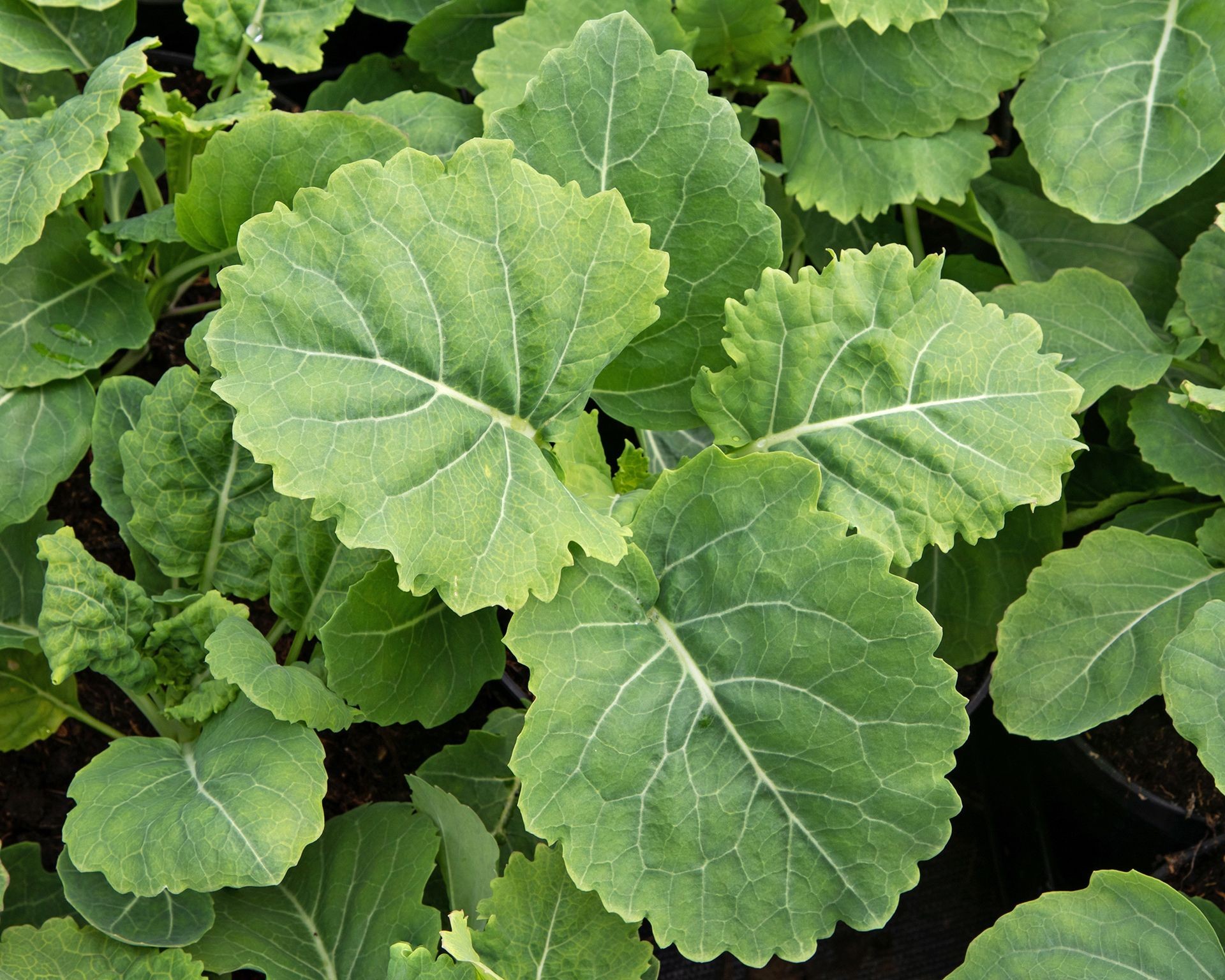 Lush green leaves of perennial kale growing in a large container, perfect for a patio edible garden.
Lush green leaves of perennial kale growing in a large container, perfect for a patio edible garden.
Rhubarb
Cultivated for its vibrant, tart stalks, rhubarb is a beloved perennial that adds a unique flavor to both sweet and savory dishes, from classic crumbles to tangy sauces. With proper care, a rhubarb plant can be productive for a decade or even longer. It’s important to note that you should refrain from harvesting any stalks during the plant’s first year to allow it to establish a strong root system.
Growing rhubarb in pots is certainly achievable, provided you choose the right container. Given rhubarb’s extensive root system, the pot needs to be substantial – at least 20 inches (51cm) deep and wide. Plant divisions or purchased rhubarb crowns in the spring. Use a well-draining potting mix generously enriched with compost or other organic matter to provide a nutrient-rich environment. Place the container in a location that receives full sun, although rhubarb can tolerate some light shade, especially in hotter climates. Water thoroughly, particularly during warm weather, to keep the soil consistently moist. Apply a balanced fertilizer in early spring to support vigorous growth. In the fall, after the leaves have died back naturally, prune away the old stalks. Rhubarb is cold-hardy, typically thriving in USDA zones 3-8.
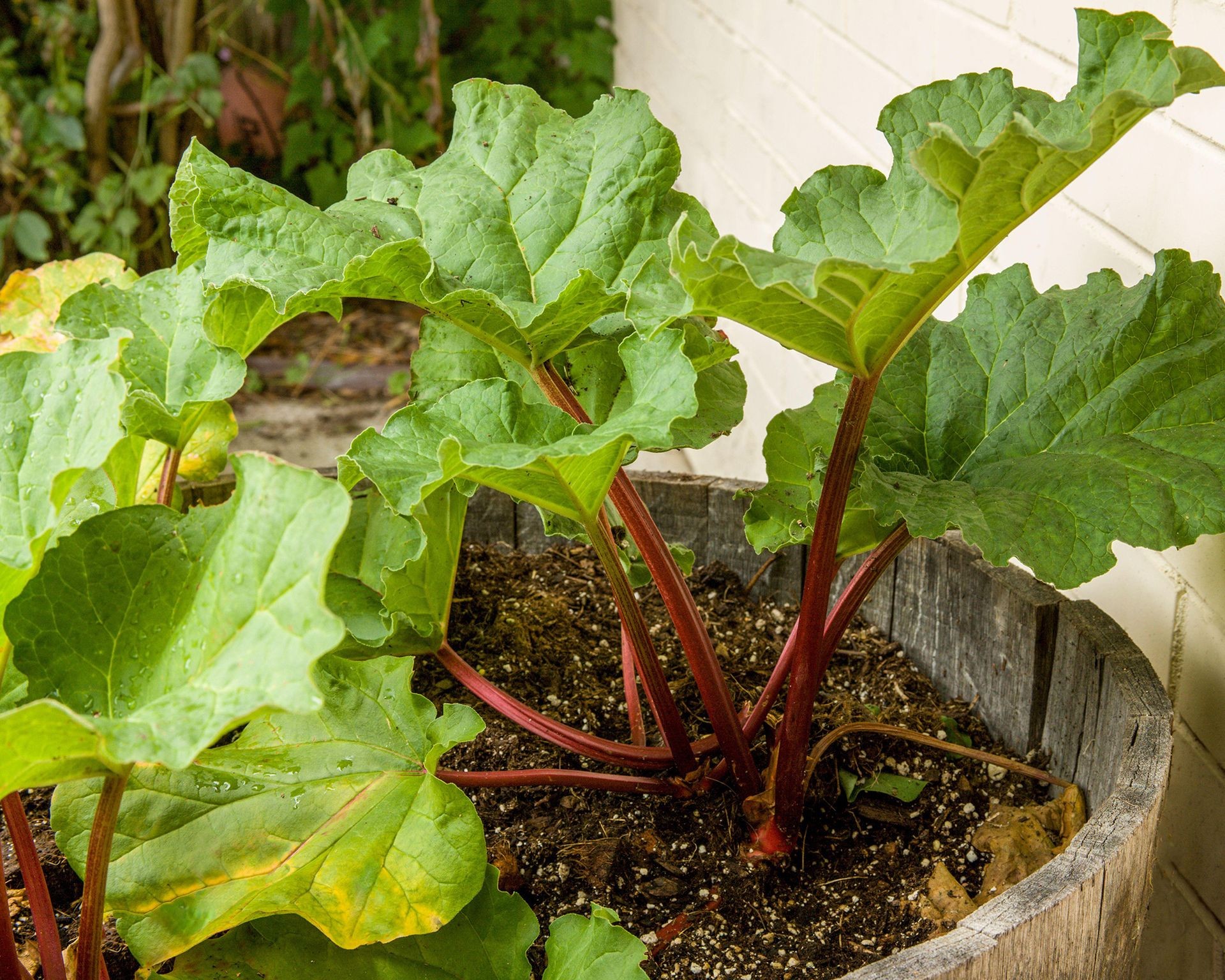 Healthy rhubarb plant with large leaves and red stalks growing in a substantial container on a patio.
Healthy rhubarb plant with large leaves and red stalks growing in a substantial container on a patio.
Wasabi
Wasabi, scientifically known as Wasabia japonica and often called Japanese horseradish, is a fascinating perennial plant originating from cool, mountainous stream beds in Japan. While the leaves are edible, the true prize is the rhizome (underground stem), famous for its intense, fleeting heat and unique flavor when freshly grated. Growing wasabi at home is considered a bit more challenging than some other vegetables on this list, but the reward of cultivating this valuable plant is immense.
Wasabi thrives in conditions that mimic its native environment: cool, shady, and consistently moist. For container growing, choose a large pot with excellent drainage. Fill it with a rich, well-aerated potting mix, ideally amended with plenty of organic matter like compost. Position the pot in a shady spot where it is protected from direct sunlight, which can quickly damage the plant. Consistent, even watering is crucial for wasabi – the soil must remain moist but never waterlogged, as this can lead to root rot. Fertilize with a balanced, slow-release fertilizer every few months to provide steady nutrients. Good air circulation around the plant is important to help prevent fungal diseases. Wasabi plants are slow-growing and can take 18-24 months to reach maturity, although you can often harvest some edible leaves and stems along the way. The rhizomes, typically ready for harvest after about two years, should be 4-6 inches long to develop their characteristic spicy punch. Wasabi is hardy in USDA zones 8-10 but can be successfully overwintered indoors in cooler climates.
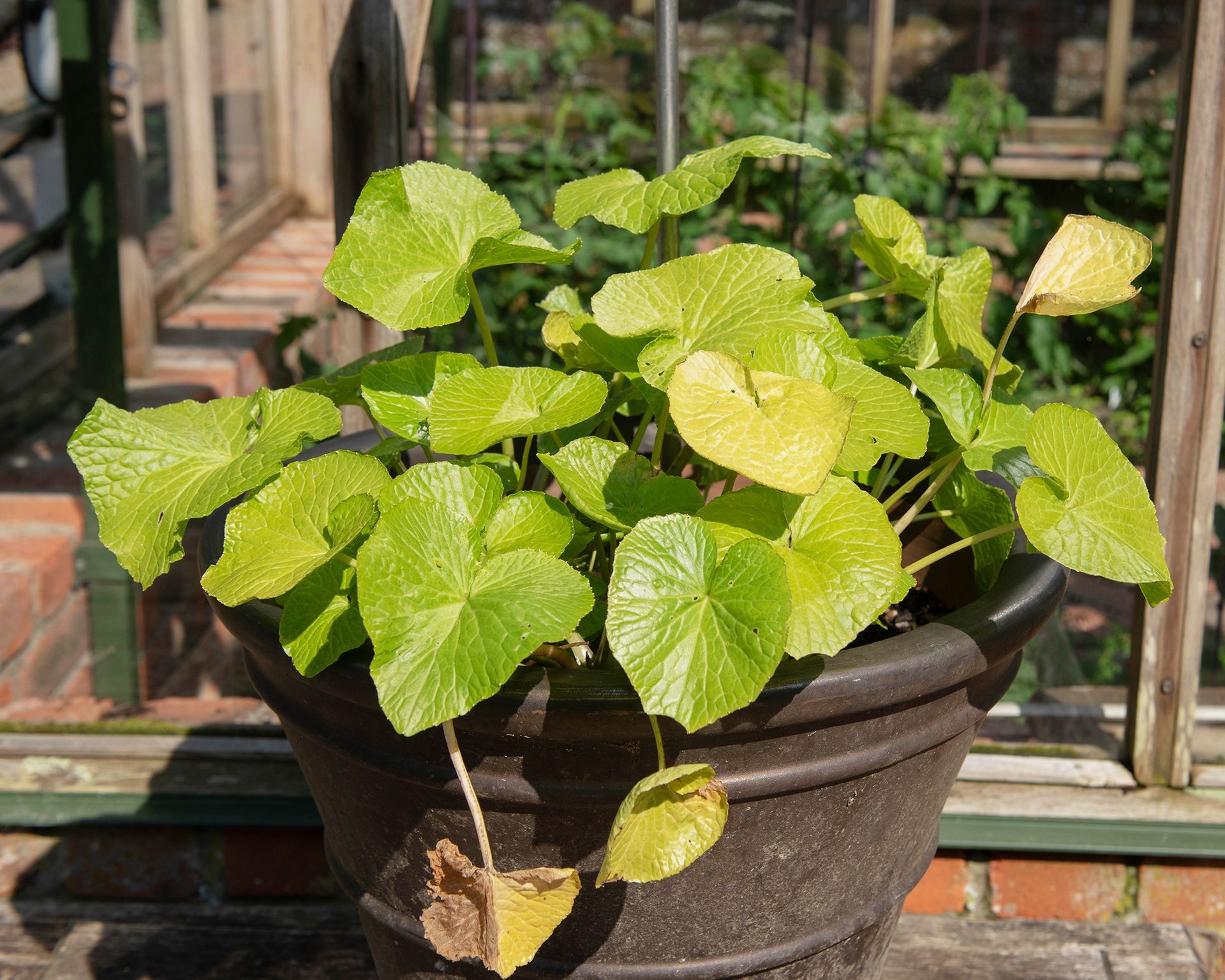 Close-up of a wasabi plant with distinctive heart-shaped leaves growing in a pot filled with well-draining soil.
Close-up of a wasabi plant with distinctive heart-shaped leaves growing in a pot filled with well-draining soil.
Sorrel
Sorrel is a versatile perennial leafy green cherished for its distinctive bright, tart, lemony flavor. It can be enjoyed fresh in salads, lightly sautéed, or used as a zesty herb to enhance the taste of other dishes. Growing sorrel in containers is an easy and highly rewarding endeavor; some gardeners even find it performs better in pots than when planted directly in the ground.
Choose a container that offers good drainage and is at least 12 inches (30cm) in diameter. Fill it with a rich, organic potting soil. You can start sorrel from seed, sowing them outdoors after the last expected frost or indoors about three weeks before the last frost date. Space seeds about 3 inches (8cm) apart, cover them with approximately half an inch (1.5cm) of soil, and keep the soil consistently moist. Once seedlings develop two sets of true leaves, thin them to about 12 inches (30cm) apart to give them room to grow. Sorrel requires minimal maintenance. Water regularly to keep the soil moist and consider adding a layer of mulch to help retain moisture and suppress weeds. You can begin harvesting ‘baby’ leaves in as little as 30-40 days, or wait about two months for more mature plants. Harvest by cutting leaves close to the base; this encourages the plant to produce more leaves. Sorrel is quite cold-tolerant and hardy in USDA zones 4 through 9.
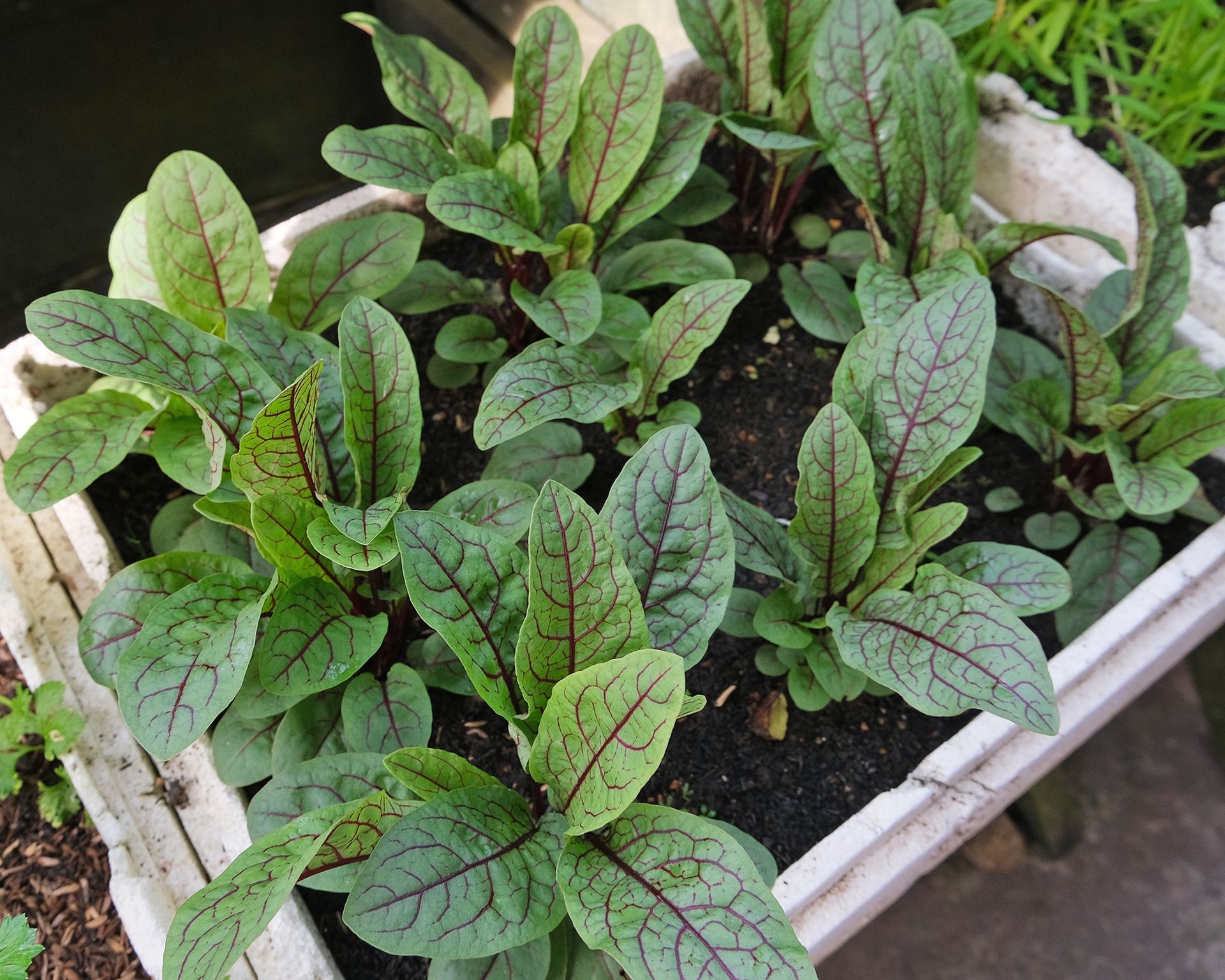 Clusters of vibrant green sorrel leaves growing densely in a large container, ready for harvest.
Clusters of vibrant green sorrel leaves growing densely in a large container, ready for harvest.
Asparagus
Asparagus is a prized spring vegetable, celebrated for its delicate flavor and tender spears. While asparagus plants can take several years to mature when grown from seed, they are most commonly planted from crowns (established root systems) to speed up the process. Even when planted from crowns, it’s generally recommended to wait until the third year before beginning significant harvests to ensure the plant is well-established.
Growing asparagus in containers is certainly an option, although it’s worth noting that confining this plant to a pot might shorten its typically very long lifespan compared to growing it in the ground. However, don’t let this deter you; you can still enjoy several years (often 3-4) of delicious harvests from a potted asparagus plant. The container is critical – it must be large enough to accommodate the plant’s developing deep roots, meaning at least 18 inches (46cm) deep and 12 inches (31cm) in diameter, with excellent drainage. Plant the crowns to a depth of 4-6 inches (10-15cm). Position the container in a sunny location where the plant can receive at least 8 hours of direct sunlight daily. Asparagus adapts to various soil types as long as they are well-draining and enriched with organic matter. Feed your asparagus plants in early spring and then every two weeks throughout the growing season with a balanced fertilizer. Keep the soil moist but never soggy. Asparagus is generally hardy in USDA zones 3-8, with some specific varieties suited for zones 2 and 9.
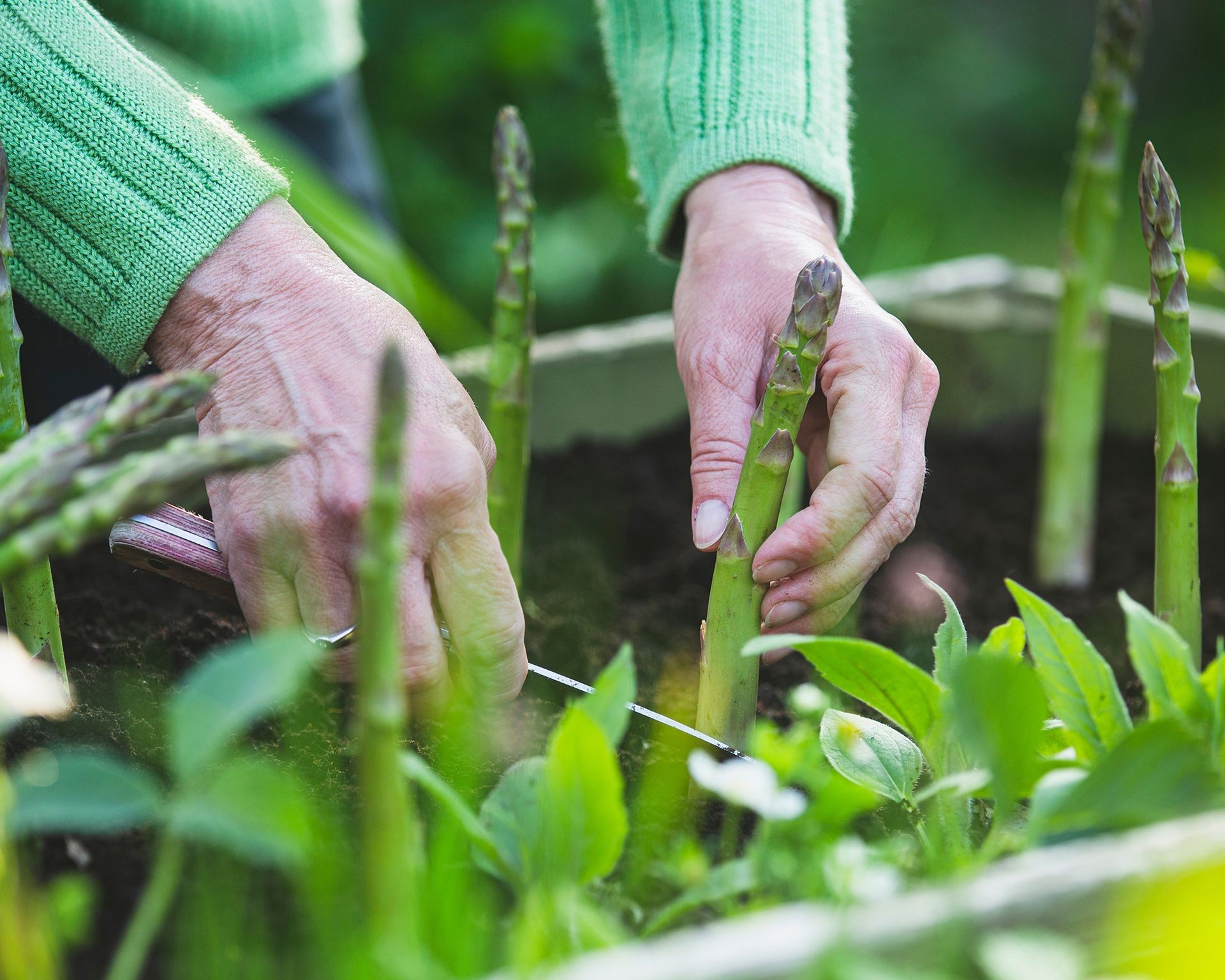 Hand harvesting tender green asparagus spears from a large black container filled with soil.
Hand harvesting tender green asparagus spears from a large black container filled with soil.
Chives
Chives are delightful perennial herbs closely related to onions, offering a mild, fresh onion flavor perfect for garnishing, salads, eggs, and countless other dishes. Beyond their culinary value, their attractive purple flowers add a beautiful touch to any container garden. Growing chives in pots is remarkably straightforward, providing the convenience of having fresh chives readily available year-round.
Choose a pot that provides good drainage and fill it with a rich, well-draining potting soil before planting. Chives thrive in full sunlight but are also quite tolerant of partial shade, making them adaptable to various locations. Water your chives regularly to maintain consistently moist soil, but avoid letting the pot sit in standing water. Feed them every few weeks with a balanced liquid fertilizer during the growing season to encourage bushy growth. Harvest chives by simply snipping the leaves with scissors when they are about a foot tall. You can cut up to half of the plant’s foliage at a time without causing harm. Both the leaves and the edible flowers can be enjoyed in your culinary creations. Chives are very hardy and can be grown successfully in USDA hardiness zones 3 through 10.
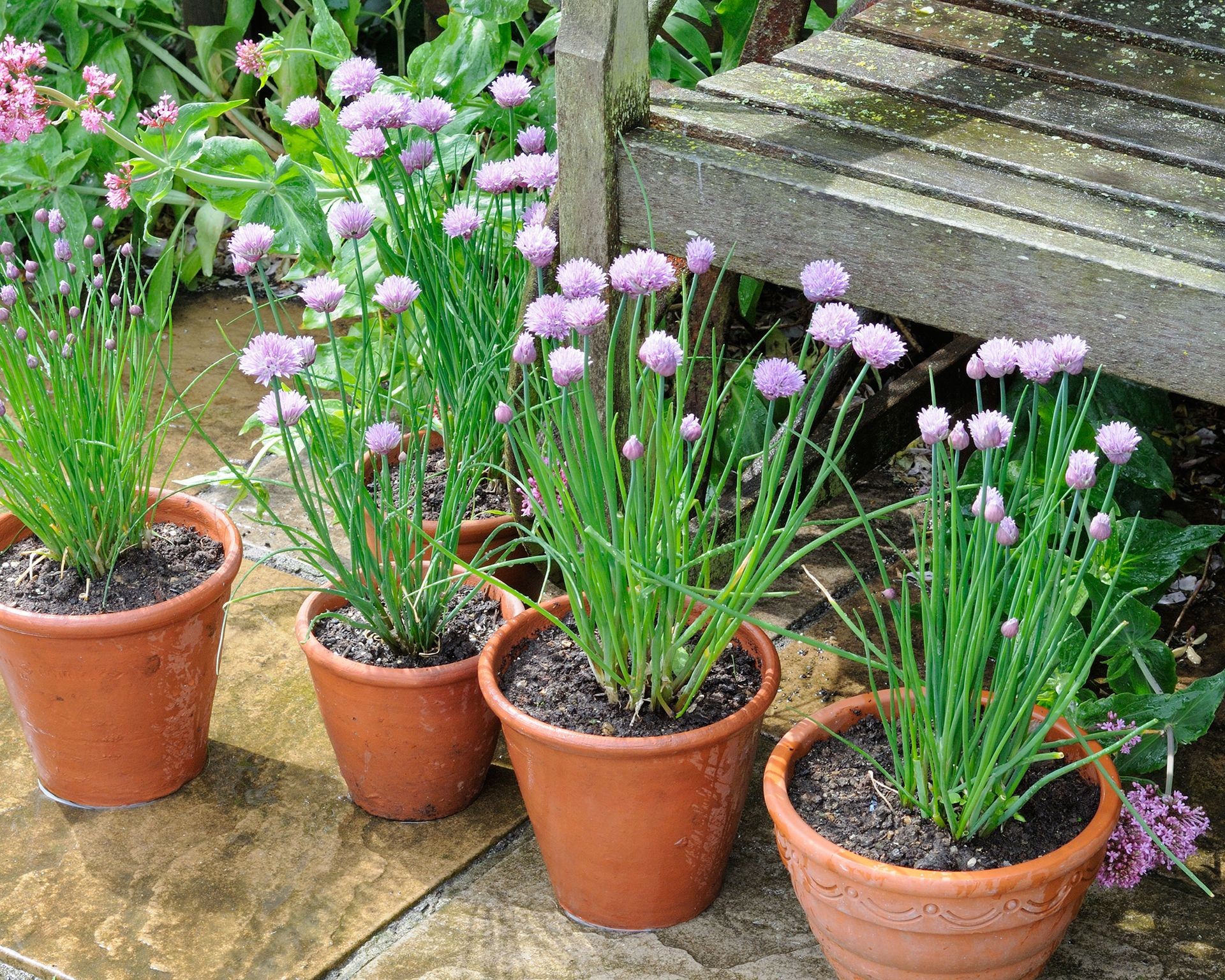 Terracotta pots filled with flowering chives displaying their characteristic purple blooms, arranged on a patio surface.
Terracotta pots filled with flowering chives displaying their characteristic purple blooms, arranged on a patio surface.
Watercress
Watercress is a fast-growing perennial known for its distinctive peppery leaves, which are fantastic for adding a flavorful punch to salads, sandwiches, and soups. It’s surprisingly easy to cultivate in containers, making it accessible even without access to a natural water source.
Watercress seeds can be sown indoors or directly outdoors. They germinate best in cool, consistently moist conditions. Use a container with good drainage, filled with a soilless mix that retains moisture, such as a blend of peat, perlite, or vermiculite. Although often associated with water, you don’t need a stream; simply placing the pot in a water-filled saucer or using a container designed to hold 2-3 inches of water at the bottom works well. Remember to change the water in the saucer or reservoir weekly to keep it fresh. Position the container in a shady spot or an area that receives only partial sunlight. Regular harvesting by trimming back the stems encourages the plant to produce more growth. Keep your watercress well-nourished with a balanced, water-soluble fertilizer applied periodically to prevent nutrient deficiencies and support vigorous production of those flavorful leaves.
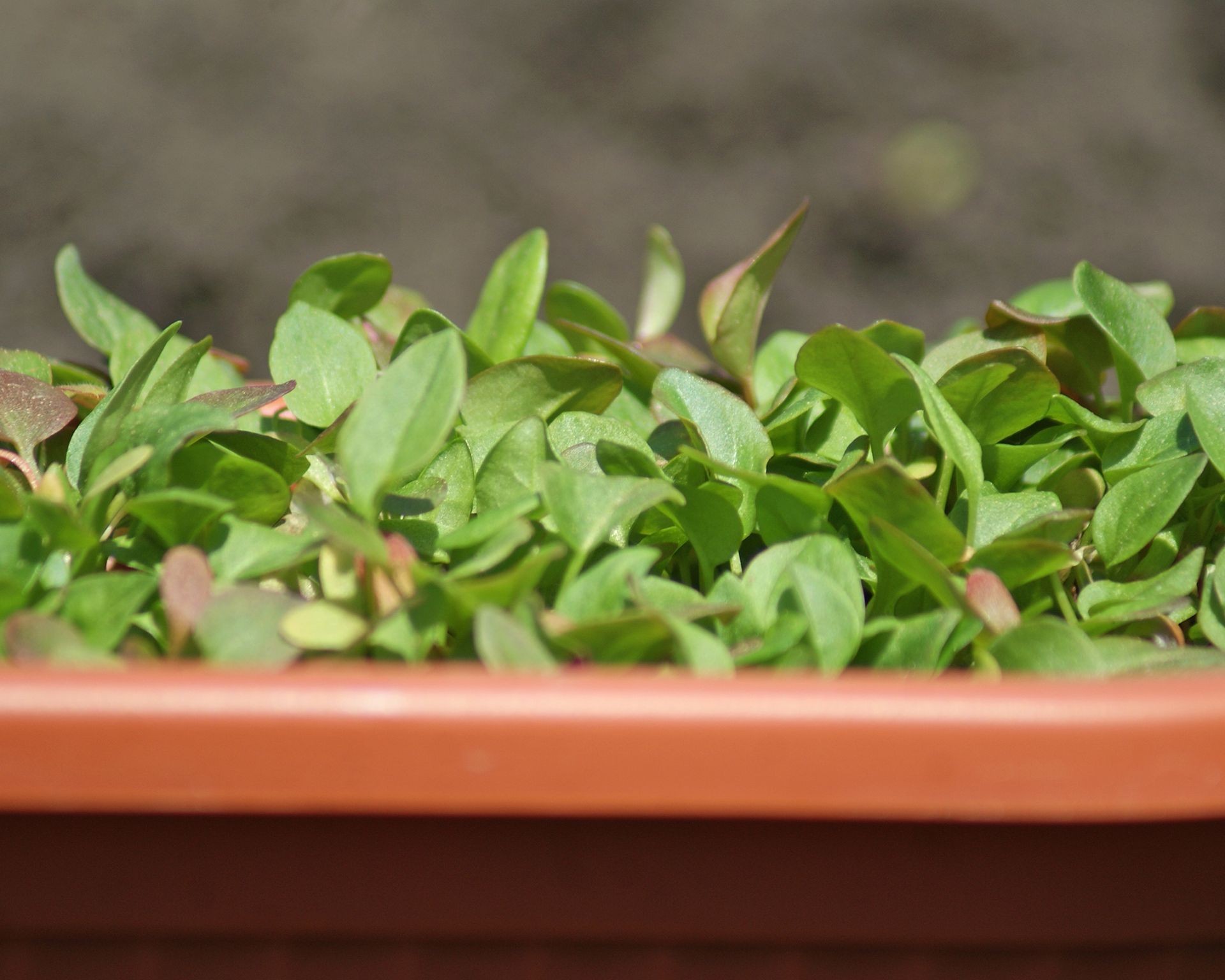 Healthy green watercress plants growing in various small containers, showcasing their adaptability to pot culture.
Healthy green watercress plants growing in various small containers, showcasing their adaptability to pot culture.
Growing perennial vegetables in containers opens up exciting possibilities for gardeners of all levels and with any amount of space. From the continuous harvest of kale and chives to the unique flavors of wasabi and sorrel, and the rewarding long-term crops like rhubarb and asparagus, there’s a perennial vegetable suited for almost every taste and condition. This method offers convenience, control, and the immense satisfaction of harvesting your own food, year after year. Ready to start your own sustainable, low-maintenance edible garden? Explore the range of quality containers, soil mixes, and plant starts available at Biogarden.asia and begin your perennial container gardening journey today!



